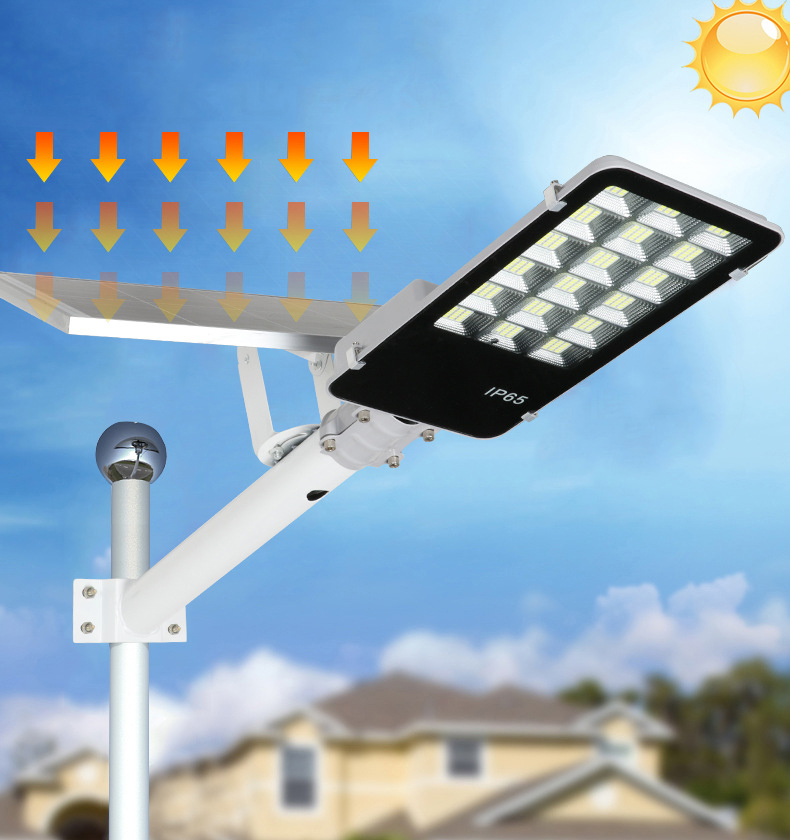 2F, Zhishan Building, Lane 999, Zhuanxing East Road, Shanghai
2F, Zhishan Building, Lane 999, Zhuanxing East Road, Shanghai  2F, Zhishan Building, Lane 999, Zhuanxing East Road, Shanghai
2F, Zhishan Building, Lane 999, Zhuanxing East Road, Shanghai Before deciding to use solar street lights, we need to first consider the advantages and disadvantages of solar street lights. In comparison to grid-powered street lights, we need to determine whether solar street lights have advantages in terms of cost, performance, installation, lifespan, and after-sales service. Ultimately, the choice between using grid electricity or solar power should be based on the specific requirements of the project. Today, let's explore the pros and cons of solar street lights from these five aspects.

Advantages of Solar Street Lights:
1.Cost: Low Comprehensive Cost
The inherent cost of solar street light products is higher than that of grid-powered lights. The cost savings mainly come from reduced expenses in burying cables and excavation.
Cost is an advantage for rural solar street lights. How about municipal solar street lights? Municipal solar street lights have higher brightness requirements, longer operating hours, especially during rainy days, resulting in higher product costs. However, overall, considering installation, solar street lights still have a cost advantage. This is under the condition that there is good sunlight exposure; in areas with poor sunlight, the comparison may not be favorable. If the power transmission circuit is too long, grid-powered lights would need additional substations, with costs that are difficult to compare.
2.Performance: High Luminous Efficiency, Energy SavingSolar street lights focus on high luminous efficiency with low power. The high luminous efficiency of solar street lights is evident in three aspects:
Another performance advantage of solar street lights is the ability for continuous, stepless brightness control over multiple time periods, meeting various scene requirements. Additionally, solar street lights have a dawn lighting function, a feature not present in grid-powered lights.
3.Installation: Simple, Non-professional Installation
4.Lifespan: Up to 10 YearsWith the replacement of short-lived lead-acid batteries with lithium batteries, the lifespan of solar street lights has doubled, reaching up to 10 years. However, this longevity is contingent on purchasing high-quality solar street lights. The market offers varying qualities, impacting the lifespan. For example, lamp posts made of overall hot-dip zinc will not rust for 30 years, as long as there is no external damage. Conversely, lamp posts made of cold-dip zinc, galvanized plates, or galvanized rods may rust within three to four years or even one to two years, particularly at stress points, leading to potential collapse. More importantly, high-quality lithium batteries can last 10-15 years, while poor-quality cells degrade rapidly, resulting in decreased brightness within a few months or a year.
5.After-sales Service: Maintenance-free, No Electricity Bills, Low Comprehensive After-sales Cost
Now that we have discussed the advantages of solar street lights, let's address their disadvantages:
1.100% Dependence on Solar EnergySince solar street lights rely entirely on solar energy for power generation, insufficient sunlight renders them ineffective. In areas with limited sunlight, especially for high-power solar street lights, there is a risk of ongoing expenses exceeding income, leading to rapid battery lifespan reduction. This is a significant drawback of solar street lights.
2.Market Chaos, Numerous PitfallsThe complexity of solar street light construction, combined with a lack of standards and regulations, results in a chaotic market with varying product quality. Many parameters of solar street lights require professional equipment for testing, making it challenging for consumers without specialized knowledge to discern product quality. The solar street light market is filled with traps, with differing prices and quality levels. Non-professional customers may find it difficult to purchase high-cost-effective products.
3.Short Maintenance of High Light FluxThe low brightness of solar street lights is a common concern among users. Several factors contribute to this issue: